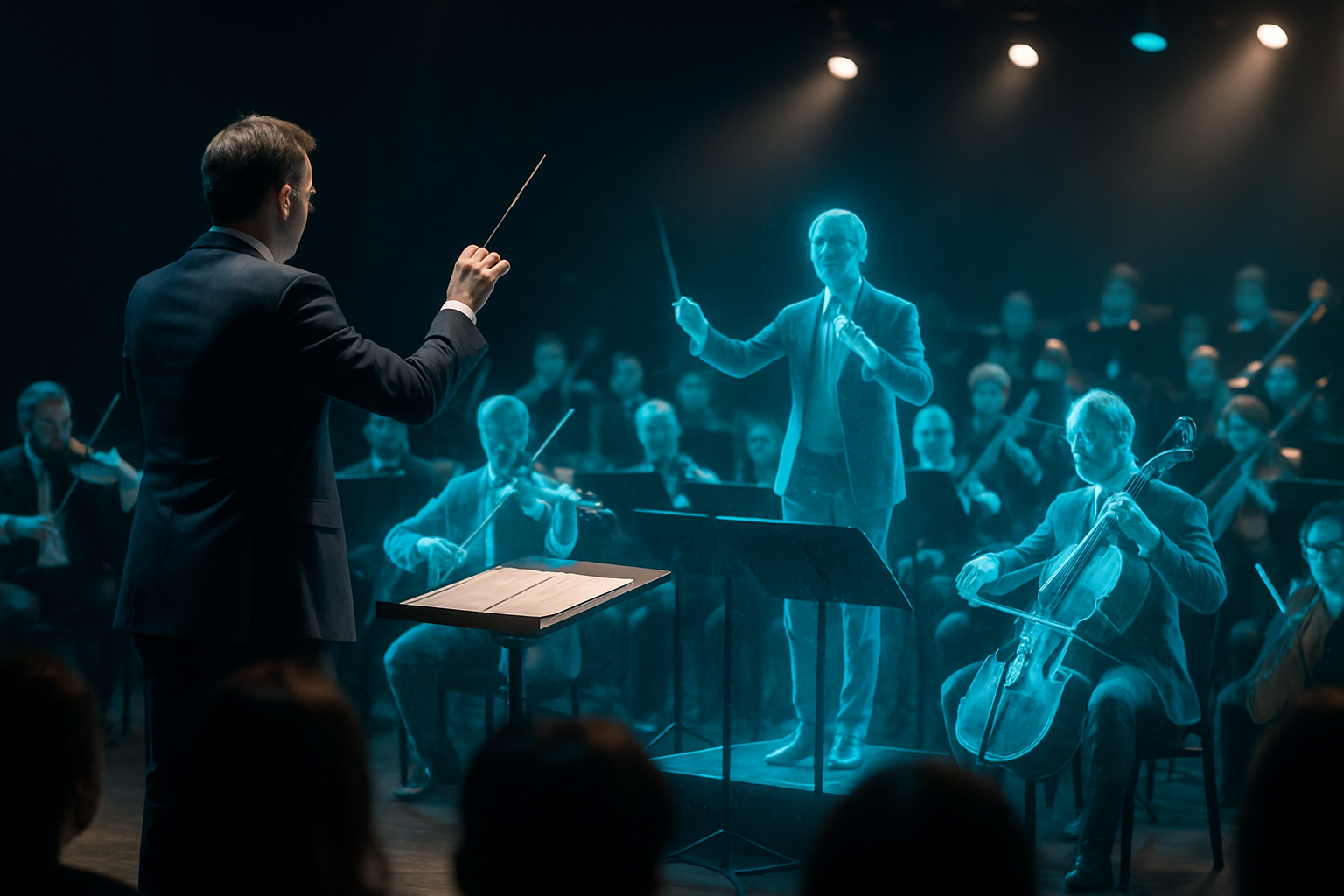Holographic Orchestras: The Future of Live Music
In a world where technology continually reshapes our experiences, the music industry stands on the brink of a revolutionary transformation. Holographic orchestras, once a concept confined to science fiction, are now emerging as a groundbreaking fusion of artistry and cutting-edge technology. This innovative approach to live music performance is not only captivating audiences but also challenging our perceptions of what constitutes a live musical experience. As holographic orchestras gain traction, they promise to redefine the landscape of concerts, bridging the gap between the past and the future of musical entertainment.

The first notable holographic music performance occurred in 2012 when a digital recreation of rapper Tupac Shakur appeared alongside live performers at the Coachella Valley Music and Arts Festival. This watershed moment demonstrated the potential of holographic technology in live music, sparking interest and investment in developing more sophisticated systems for full orchestral performances.
Technical Marvels Behind the Curtain
At the heart of holographic orchestras lies a complex interplay of advanced technologies. High-resolution projectors, motion capture systems, and artificial intelligence work in concert to create lifelike, three-dimensional images of musicians. These projections are synchronized with pre-recorded or live audio, creating the illusion of a full orchestra performing in real-time.
The process begins with capturing the movements and expressions of real musicians using high-fidelity motion capture technology. This data is then processed and refined to create digital models that can be projected as holograms. Sophisticated AI algorithms ensure that these digital performers respond to conductor cues and interact naturally with live musicians on stage, if present.
The Artistic Implications
Holographic orchestras present a fascinating dichotomy in the world of classical music. On one hand, they offer unprecedented access to performances by legendary conductors and musicians from different eras, allowing audiences to experience historical collaborations that were never possible in reality. On the other hand, purists argue that the essence of live performance – the energy, spontaneity, and human connection – may be lost in these digital recreations.
Proponents of the technology argue that holographic orchestras can serve as a powerful educational tool, bringing world-class performances to remote areas and inspiring a new generation of musicians. They also point out the potential for creating unique, cross-temporal collaborations, such as pairing a contemporary soloist with a holographic orchestra led by a conductor from the past century.
Economic and Logistical Advantages
From a practical standpoint, holographic orchestras offer significant economic and logistical benefits. Traditional orchestras face challenges such as high operational costs, complex travel arrangements, and limited venue options due to space requirements. Holographic technology addresses these issues by reducing the need for physical presence, allowing for simultaneous performances in multiple locations, and enabling performances in venues that would otherwise be unsuitable for large ensembles.
This technology also opens up new revenue streams for orchestras and musicians. By creating high-quality holographic recordings, performers can extend their reach and continue to generate income from performances long after they have retired or passed away. This aspect, however, raises complex ethical and legal questions regarding image rights and posthumous performances.
Challenges and Controversies
Despite the exciting possibilities, the rise of holographic orchestras is not without controversy. Critics argue that the technology could lead to a devaluation of live musicianship and potentially reduce employment opportunities for professional musicians. There are also concerns about the authenticity of the experience and whether audiences will truly connect with holographic performers in the same way they do with live musicians.
Technical challenges persist as well. Creating convincing holographic projections that can interact seamlessly with live elements requires constant refinement of the technology. Issues such as maintaining proper lighting conditions, ensuring consistent sound quality, and managing the complexities of real-time interaction between holographic and live performers are ongoing areas of development.
The Future Soundscape
As holographic technology continues to advance, we can expect to see increasingly sophisticated and immersive orchestral experiences. The line between virtual and physical performances may blur further, potentially leading to hybrid concerts where live and holographic musicians perform side by side. This could open up unprecedented creative possibilities, allowing for grand-scale productions that were previously impossible due to physical or temporal limitations.
The impact of holographic orchestras extends beyond classical music. Pop concerts, operas, and even Broadway shows are exploring the potential of this technology to enhance their productions and create memorable experiences for audiences. As the technology becomes more accessible, we may see a democratization of high-quality musical performances, bringing world-class concerts to audiences regardless of geographic or economic barriers.
In conclusion, holographic orchestras represent a fascinating convergence of art and technology, challenging our perceptions of live music while opening up new frontiers of creativity and accessibility. As this technology continues to evolve, it will undoubtedly play a significant role in shaping the future of musical performance, offering both thrilling possibilities and complex challenges for the industry to navigate.





